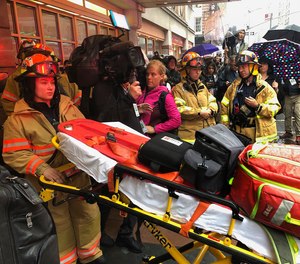
Understand the role of funding priorities and individual department needs in award decisions
Twice a year, there is increased discussion on the topic of Assistance to Firefighters Grant program priorities versus individual department needs. It’s clear that some departments simply don’t understand that there is a vast difference between priorities and needs when it comes to actually landing an AFG grant award.
These increased discussions seem to coincide with two periods: 1) the announcement of AFG program awards and 2) the announcement of the opening of the next AFG program application period. During these two periods, I will receive phone calls from department members stating, “We applied for one of the listed priorities so why didn’t we get funded?” or potential applicants saying, “We don’t know what to apply for. What are the priorities this year?”
Let’s look at how potential applicants should navigate the grant application process while keeping these important factors in mind.
Funding priorities and criteria for evaluating AFG applications are established by FEMA based on the recommendations from the Criteria Development Panel (CDP). Specifically, each year, FEMA convenes a panel of fire service professionals to develop funding priorities for the AFG program. The panel makes recommendations about funding priorities as well as developing criteria for awarding grants.
The fire service organizations represented on the panel are:
The CDP is charged with making recommendations to FEMA regarding the creation or modification of previously established funding priorities as well as developing criteria for awarding grants. The content of the AFG Notice of Funding Opportunity (NOFO) reflects implementation of the CDP’s recommendations with respect to the priorities, direction and criteria for awards.
In recent years, FEMA has done an excellent job of categorizing their priorities. The AFG NOFO contains all of grant’s priorities presented in matrix format, with high, medium and low priorities attached to each category. The prospective applicant simply needs to search for their potential project and find the priority ranking FEMA has assigned to it.
The “need” part of the equation is described by the grant applicant, and it is the determining factor if your application for a priority item stands any chance of being funded by FEMA. That’s why my answer to those people who ask what the AFG priorities are this year is always, “What are your department’s needs?”
Those needs can be ascertained by conducting your department’s annual risk assessment. I know some of you are probably tired of hearing me preach about the need to do an annual assessment, but it has proven to be the most helpful tool in writing a competitive application.
After completing your assessment, you may have identified one or more needs for your department. At this point in the process, you should access the priority matrix that FEMA has developed and determine the priority ranking that FEMA has assigned to each of your identified needs. Please keep in mind, with decreased funding in recent years, the AFG program has only been able to fund high-priority projects.
I’m sure some of you are thinking, “But my need is a high priority and I still didn’t get funded.” I hear variations of this statement dozens of times each year. There are several reasons that this happens. Keep in mind that scoring a grant application is like passing through a series of screens, with each screen getting smaller and smaller.
Let’s use turnout gear as an example. Replacing turnout gear that is over 10 years old and two NFPA cycles is a priority. Just because your department’s turnout gear is 12 years old doesn’t mean it is automatically going to get funded. Every AFG cycle, FEMA receives hundreds of requests for turnout gear that meets its priority ranking. Through its review process, FEMA looks at criteria such as call volume, population served, age of current turnout gear, commitment to comply with NFPA standards and additional factors. Next, reviewers look at the level of detail provided by the applicants in their narratives. If their narrative gives a complete description of the condition of the turnout, risks to which it is exposing firefighters, training opportunities that are being denied, and decreased staffing levels that it is causing, then that application stands a better chance of passing through that final screen and being funded based on priority and need.
I hope this helps provide clarity between the role of priorities and needs in the AFG program process.
Copyright © 2025 FireGrantsHelp.com. All rights reserved.
